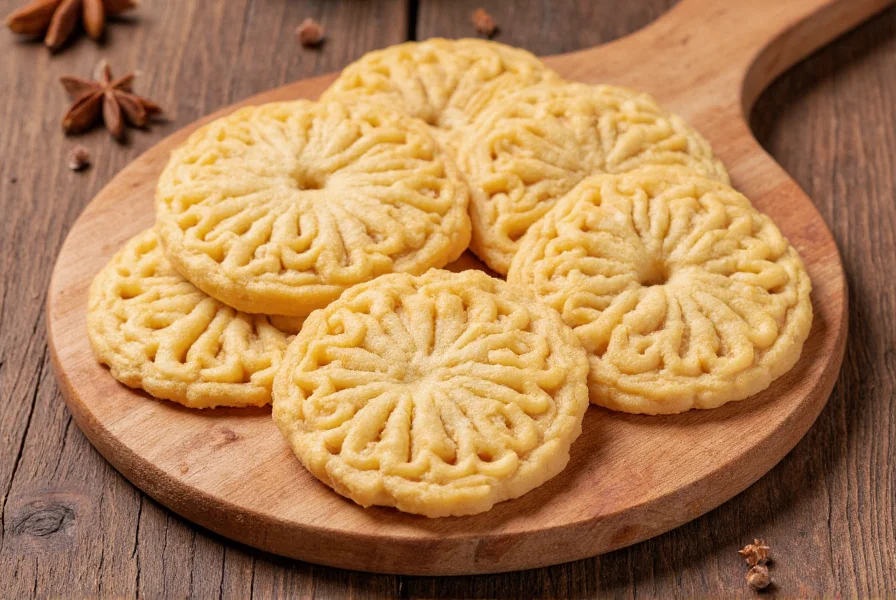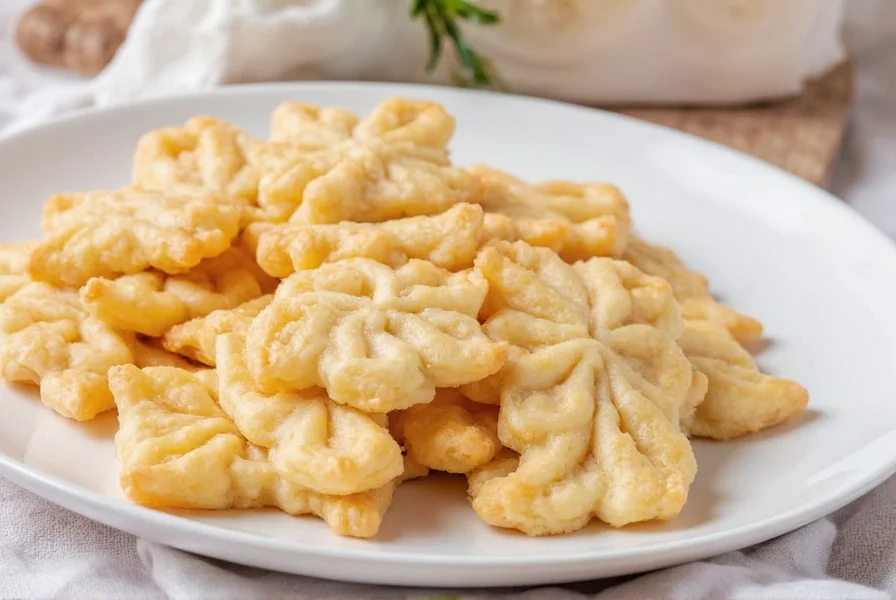The authentic anise pizzelle recipe requires 3 eggs, 1 cup sugar, 1 cup all-purpose flour, 1/2 cup anise extract (or 2 tbsp anise seeds), 1/2 cup melted butter, and 1 tsp baking powder. Whip eggs and sugar until pale, fold in dry ingredients, then add melted butter and anise. Cook in a preheated pizzelle iron for 30-60 seconds until golden. This traditional Italian recipe yields crisp, delicate cookies with distinctive licorice-like flavor that pairs perfectly with coffee or dessert wines.
Making perfect anise pizzelle requires understanding both the technique and the cultural heritage behind these delicate Italian cookies. Originating from the Abruzzo region, pizzelle (meaning “little pizzas” in Italian) have been crafted for centuries using ornate irons that imprint beautiful designs. The addition of anise reflects traditional Italian flavor preferences, offering a subtle licorice note that complements the cookie's crisp texture.

The Cultural Significance of Anise in Pizzelle
Anise has played a vital role in Italian baking traditions for generations. This aromatic seed, with its distinctive licorice-like flavor, was historically valued not only for taste but also for digestive properties. In many Italian households, anise-flavored pizzelle represent more than just a treat—they're a connection to heritage, often prepared for holidays and special occasions. The flavor profile balances sweetness with complexity, making these cookies ideal accompaniments to espresso or after-dinner drinks.
Ingredient Selection for Authentic Flavor
Quality ingredients make the difference between ordinary and exceptional pizzelle. For the most authentic traditional Italian pizzelle recipe with anise, consider these specifics:
| Ingredient | Quality Recommendation | Why It Matters |
|---|---|---|
| Anise | Fresh seeds or pure extract | Old seeds lose potency; imitation extract creates artificial flavor |
| Flour | Unbleached all-purpose | Bleached flour affects texture and browning |
| Eggs | Large, room temperature | Proper aeration creates lighter texture |
| Butter | Unsalted, European-style (82% fat) | Higher fat content improves crispness |
Essential Equipment for Perfect Pizzelle
While traditional pizzelle were made over open fires using cast iron presses, modern anise pizzelle recipe without alcohol preparation requires:
- A quality pizzelle maker with adjustable temperature control
- Non-stick surface (avoid cooking spray which can damage coating)
- Metal spatula for careful removal
- Parchment paper for cooling
Temperature control proves critical—too hot and the cookies burn before cooking through; too cool and they stick. Most makers require 3-5 minutes preheating. Test with one cookie before committing your entire batter.
Step-by-Step Preparation Guide
Follow these precise steps for classic Italian anise pizzelle instructions that yield perfect results every time:
- Whip eggs and sugar with electric mixer until thick, pale yellow ribbon forms (5-7 minutes)
- Sift together flour, baking powder, and salt to ensure even distribution
- Gently fold dry ingredients into egg mixture using a spatula
- Mix melted butter with anise extract (or ground seeds) and fold into batter
- Preheat pizzelle maker to 375°F (medium-high setting)
- Apply small amount of batter (about 1.5 tablespoons) to center of iron
- Close lid firmly and cook 30-60 seconds until edges turn golden
- Remove carefully with metal spatula and cool on parchment paper
Troubleshooting Common Pizzelle Problems
Even experienced bakers encounter issues with best pizzelle maker settings for anise cookies. Here's how to solve frequent problems:
- Sticking to iron: Batter may contain too much liquid or iron isn't hot enough. Wipe iron with damp cloth between batches.
- Burning: Reduce temperature by 25°F. Darker batters caramelize faster.
- Soft instead of crisp: Undercooked or stored before completely cooled. Extend cooking time by 5-10 seconds.
- Uneven patterns: Too much batter or lid not closed firmly. Use consistent portion size.
Serving and Storage Recommendations
Pizzelle reach peak flavor 24 hours after baking when the anise flavor fully develops. Store in airtight containers with parchment between layers for up to two weeks. For longer storage, freeze in vacuum-sealed bags for up to three months. Thaw at room temperature—never microwave, as this destroys the delicate crispness.
Serve traditional anise pizzelle with:
- Espresso or strong coffee
- Limóncello or other Italian digestifs
- As accompaniment to fruit salads
- Filled with sweetened ricotta for cannoli-style treats
Variations on the Traditional Recipe
While authentic pizzelle recipe using anise extract remains popular, consider these thoughtful variations:
- Milder anise version: Reduce extract to 1/2 tsp and add 1 tsp vanilla
- Citrus twist: Add zest of one orange to complement the anise
- Almond variation: Substitute 1/4 cup flour with almond flour
- Chocolate drizzle: Melt dark chocolate for elegant presentation
Remember that authentic Italian baking values simplicity—avoid overcomplicating the recipe, which diminishes the delicate anise flavor that defines this traditional treat.

Frequently Asked Questions
Can I make anise pizzelle without a pizzelle maker?
Yes, though results won't be traditional. Use a waffle iron on lowest setting or shape small portions in a hot, lightly greased cast iron skillet. Press with another heavy pan for pattern. Texture will differ significantly from authentic pizzelle.
Why does my anise pizzelle recipe stick to the iron?
Sticking usually occurs when the iron isn't properly preheated or the batter contains too much liquid. Ensure your iron reaches proper temperature (test with small amount of batter first). Wipe the iron with a lightly dampened cloth between batches rather than using cooking spray, which can damage non-stick surfaces.
How can I intensify the anise flavor in my pizzelle?
For stronger anise flavor, toast whole anise seeds in a dry pan until fragrant, then grind them fresh. Use 2-3 tablespoons of ground seeds instead of extract. Alternatively, increase pure anise extract to 1.5 teaspoons. Avoid imitation extracts which create artificial, harsh flavors that overpower the delicate cookie.
Can I make gluten-free anise pizzelle?
Yes, but texture will differ. Substitute all-purpose flour with a quality gluten-free 1:1 baking blend. Add 1/4 teaspoon xanthan gum if not included in your blend. Chill the batter for 30 minutes before cooking to improve structure. Expect slightly more fragile cookies that may not hold intricate patterns as well.











 浙公网安备
33010002000092号
浙公网安备
33010002000092号 浙B2-20120091-4
浙B2-20120091-4